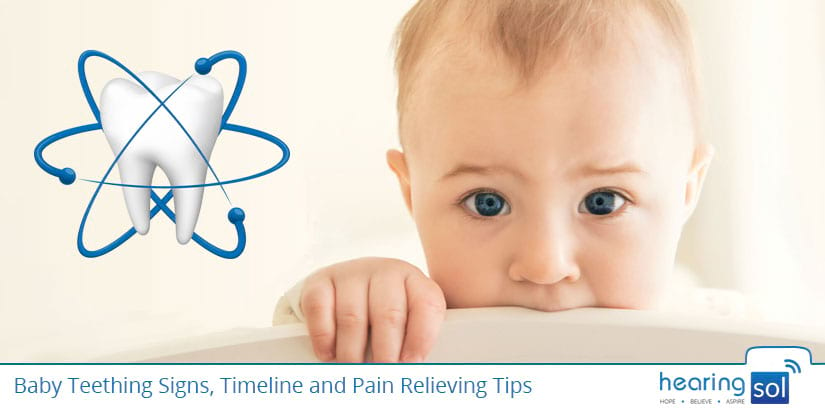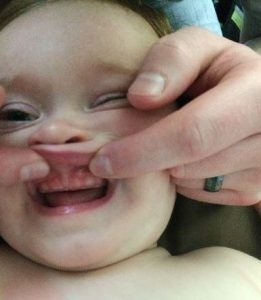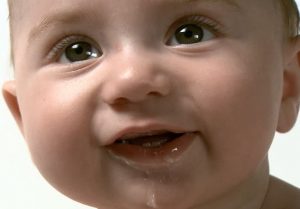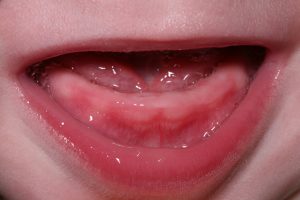
When a child is born, a couple of months later, he or she tends to start bearing teeth, especially on their lower jaw.
This process is commonly referred to as ‘teething’ in medical sciences. However, during this process, the baby also develops a tendency of biting anything and everything he or she can lay their hands on.
If you need any assistance or have a question about Baby Teething, you can consult our HearingSol experts with your problem, feel free to call us on +91-9327901950. We are always here to help you.
Lets read the full process of teething and how to give relief to a baby during teething time.
What Is Teething?
It is sort of a craving that starts getting developed as soon as the baby’s teeth emerge gradually. Every baby experiences the beginning of teething somewhat differently.
While some may have virtually no symptoms, others suffer through pain and fussiness for months during teething.

But, if you know the signs to look out for, the timing of teething in your baby as well as home remedies, you can easily alleviate teething discomfort in your child.
Also, these can help both your baby and you to get through this sort of milestone with less effort.
Teething Timeline
Usually, babies get their teeth in pairs. First of all the two middle teeth on the bottom will come out. And approx after a month later, two more teeth arrive right above the two bottom teeth.
This scenario sometimes changes, but in rare cases.
A natural baby teeth timeline is:
- 5-10 Months: Lower Central Incisors
- 6-12 Months: Upper Central Incisors
- 10-16 Months: Lower and Upper Lateral Incisors
- 12-18 Months: Lower and Upper First Molars
- Around 22 Months: Upper and Lower Canines
- 30-33 Months: Lower and Upper Second Molars
Watch the below video to know specifically:
The whole teething process lasts for about 2-3 years. But after some of the teeth come out, the teething process will become less painful.
Signs Of Teething
Generally, babies start to teethe when they are over 7 months old. When your baby’s teeth show up, you might be taken by surprise, or you might just finally understand what all those strange symptoms were about.
Usually, the common signs of teething include:
1. Crying
When the baby tried everything that they can do to get relief from the gum pain and still not getting away from it then they start crying.
Crying of a baby is always considered as the baby is in need of something. Just like when they are hungry they cry and after breastfeeding either they sleep or they will calm down.
2. Increased Sucking
During teething, your baby will try every trick he/she knows to decrease the weird pressure felt on the gums.
Including biting, most babies also starting to have an urge to suck anything they can find. Thus, make sure whatever your baby is trying to suck should be hygienic and clean.
3. Flushed Cheeks
Rosy-red cheeks of a baby might be a sign of teething. The cheeks of your baby become red because the tooth coming out from the gum can cause irritation. You might also notice that the baby’s cheeks are also feeling warm.
4. Biting
When the tooth starts coming out from the gum, the pressure of it can irritate the surface of the gum.
In order to get relief from it, your baby might start to bite his/her favorite toys or he/she may try to chew fingers by biting down on them.
5. Irritation
The sore gums that are coming with teething will make your baby more than a little irritable. Any baby can become fussy or cranky when new teeth are on their way.
Keep your teething baby distracted or try to comfort him/her with snuggling. This might help with the pain.
6. Drooling (Excessive Saliva)

This is one of the most popular signs that your baby is teething. Excessive drooling starts to happen during teething and this can result in diarrhea.
7. Swollen Gums

Red, swollen gums are definitely a sign of teething. In this case, gently rub your clean finger on your baby’s gum. This can help to soothe them.
8. Refuses To Eat Food
The process of teething is painful that can cause your baby upset because all they can think or feel is the pain in their gums. This ends up in reducing appetite when the baby refuses to eat or drink anything.
9. Trouble Sleeping
It is not easy to fall asleep with all the pressure and pain in the gum that your child is having. During teething, the day naps and the night sleeps, all end up broken which results in tiredness and unhappiness of the baby.
10. Pulling Ears
When teething starts in your baby, the pain that the baby feels in her/his gums can also cause some weird sensation in the ear.
In this, pulling the ear might temporarily reduce the pain and your baby can get used to it. Resulting in your baby constantly trying to pull his/her ears.
11. Rubbing Chin And Cheeks
Your baby can be quite resourceful and can do self-massage by pulling or rubbing chin or cheeks (Area around their jaw). This creates counter pressure that helps in getting comfort from the pain and throbbing.
12. Rash Around The Mouth

Too much drooling can cause a mild rash around the baby’s mouth chin and chest. That is why it is crucial to take care of your baby during teething so that while your baby is drooling you can wipe away the drool.
Remember, not wipe this drool too often as it can also irritate the skin.
13. Fever
It might also be possible to have a slightly increased body temperature for your baby during teething. It is also known as teething fever.
However, temperature above 100.4 degrees Fahrenheit cannot be associated with teething and can be a sign of another disease.
14. Cough and/or gag reflex
When baby drools during teething, this drool can make your baby gag and cough. However, it is not a cause for concern if your baby is not having other signs of cold, flu, or allergies.
Thus, if you notice any or all of these signs, it is very likely that your baby is teething. The first tooth is a significant event in your baby’s young life, but it can also be uncomfortable.
If you know about teething, you can help your baby in a better way to get through it. It is, therefore, advised to seek a dentist when your baby has his or her first tooth sprouts.
How To Reduce Teething Pain?
Dealing with a baby when he or she is teething can become quite a nightmare for parents, especially during the night.
You may need to try following different things to help your little one feel better as well as giving you a peaceful sleep:
1. Baby Teething Toys
Use some cold pacifier or teething toys. Give your baby teething toys to chew safely. This also helps in easing the discomfort and eventually distract them from any pain.
Some teething toys like Teething Ring may be cooled to help soothe your baby’s gums.
2. Baby Teething Gel
Teething gels are those gels that are used to put on the sore parts of the baby’s gums. They are designed to numb the pain.
You can get teething gels at any pharmacy and make sure that you follow the instructions on how to use it and avoid using too much.
3. Freeze A Wet Washcloth
The thick fabric of a frozen wet washcloth will feel good to your baby and its coldness can also numb your baby’s sore gums. A teething ring that is been chilled in the fridge can also work.
4. Massage Their Gums
With your clean finger, try to rub on the gums of your baby for 1-2 minutes. It will help in reducing the pain or comforting in the pressure. It is also helpful in erupting of the tooth.
5. Comforting A Teething Baby
Usually, comforting or playing with your baby can distract them from any pain in the gums. So, you can spend more time playing with your baby when he or she is teething.
6. Preventing Teething Rash
If teething is making your baby irritable more than usual, gently wiping their face may help prevent a rash. But do not do this frequently because your baby’s skin is sensitive and it can cause irritation.
Caring For Your Baby’s New Teeth
When the first tooth of your baby appears, try to begin cleaning it twice a day. You can clean your baby’s new tooth by a washcloth very gently on it.
And remember, do not put your baby to sleep with a bottle or anything to eat because your baby’s chances of having cavities are now increased.
Start brushing your baby’s teeth with toothpaste that contains fluoride as soon as their first milk tooth has grown.
If you need any assistance or have a question about Baby Teething, you can consult our HearingSol experts with your problem, feel free to call us on +91-9327901950. We are always here to help you.

 Reviewed by Mr. Ranjeet Kumar
Sr. Audiologist, Speech Therapist & Cochlear Implant Specialist, BASLP on
Reviewed by Mr. Ranjeet Kumar
Sr. Audiologist, Speech Therapist & Cochlear Implant Specialist, BASLP on